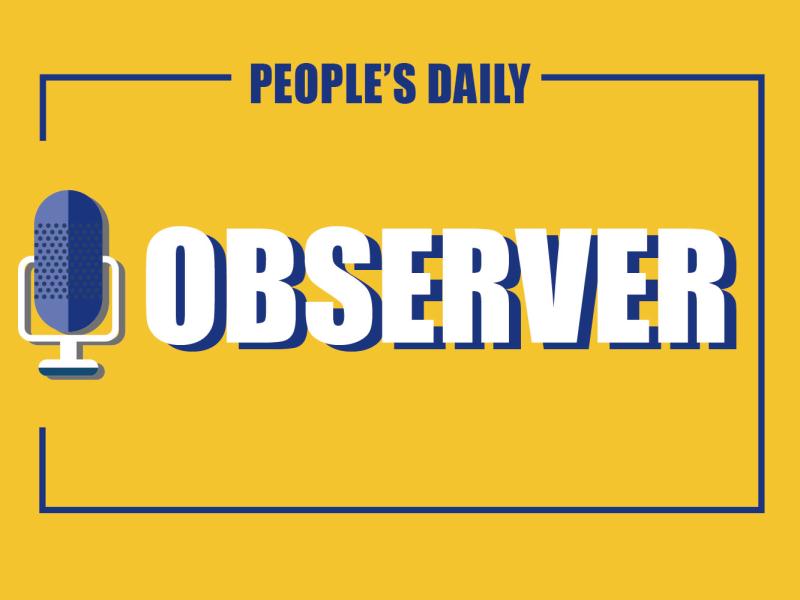
While some in the US still believe the country's response to the COVID-19 pandemic has been great, the reality they face is increasingly exposing their absurdity. In recent weeks, daily new infection cases in the country have frequently passed 50,000. Anthony S. Fauci, the top infectious disease expert on the White House COVID-19 task force, recently admitted: “When you compare us to other countries, I don’t think you can say we’re doing great. I mean, we’re just not.”
Fauci was telling the plain truth, of course, but many people here just don’t want to hear it, including that well-known impatient listener in the White House. For now, one thing health experts agree and more of the public have come to realize is that, unlike most European countries, the US has never been able to flatten the curve in the past months.
Just a few weeks ago, some policymakers here were so eager to pretend the outbreak was gone that health experts who oppose reopening in a too early fashion were almost treated as saboteurs of the American economy. That's exactly why the US is seeing another surge in cases in recent weeks. "We did not shut down entirely," Fauci said. "And that's the reason -- when we went up, we started to come down, and then we plateaued at a level that was really quite high, about 20,000 infections a day. Then, as we started to reopen, we 're seeing the surges that we' re seeing today as we speak."
US President Donald Trump has previously said the new surge in infections was only due to the large number of testing. On this, health experts disagree again. Former CDC director Tom Frieden wrote on the Fox News website that “there is no doubt that we are seeing a real increase in COVID-19, not an increase because of more testing. The proportion of tests coming back positive has increased further in most of the United States, a key indicator that more people are getting infected.”
So far, most health experts have been surprised or even angered by the country’s response to the outbreak. They have good reason to feel so. In many ways, the US should not have been so vulnerable to this virus. The country has the most developed public health system and leads the world in the number of health industry personnel. At the same time, the population density in the US should be more helpful than in many other countries in dealing with such an infectious disease. In addition, the highly popular car culture in the US also helps people maintain a social distance.
Clearly, none of these has translated into the effective control of the outbreak. Now, many observers are looking beyond the health field to explain America's disastrous handling of the pandemic. Edward Luce of the Financial Times concluded that both the US and Britain have been overconfident in dealing with this pandemic. He recently wrote that “America and Britain’s poor responses to COVID-19 can be traced partly to post-cold war self-congratulation — the belief that neither had much to learn from the rest of the world. In a few short months a microbe has exposed the underside to Anglo-American hubris. It could take far longer to undo the pandemic’s damage to their brands.” To have a sense how overconfidence has botched the US’ response to the outbreak, one just needs to take a look at the baffling awkward feelings some Americans have had about wearing facial masks.
Like most problems facing the US, the country's politics, instead of effectively mobilizing national resources to solve the problem, has exacerbated it. To this day, most health experts agree that the White House's response to the outbreak has added to people’s confusion about the pandemic. Science said in an article that the US response to the outbreak was "fragmented, chaotic, and plagued by contradictory messaging from political leaders".
Meanwhile, research by many political scientists has found that political polarization is also hampering the US response to the pandemic. Christos Makridis of the MIT Sloan School of Management and Jonathan Rothwell, the principal economist at Gallup, reached the conclusion after analyzing data collected by Gallup on 45,000 individuals between March and June that “fear, economic expectations, workplace visits, social-distancing, and mask-wearing are all driven by party identification to a much greater extent than local public health conditions, state economic conditions, or state public health policies.” A poll released by Axios-Ipsos found that 71 per cent of Democrats, twice as many as Republicans, said they always wore masks when they were outside their home.
Now, when more people wonder impatiently why the US is still not flattening the curve, George Packer of the Atlantic offered a bitter, but seemingly truer, answer to the question: “When the virus came here, it found a country with serious underlying conditions, and it exploited them ruthlessly. Chronic ills—a corrupt political class, a sclerotic bureaucracy, a heartless economy, a divided and distracted public—had gone untreated for years.”


